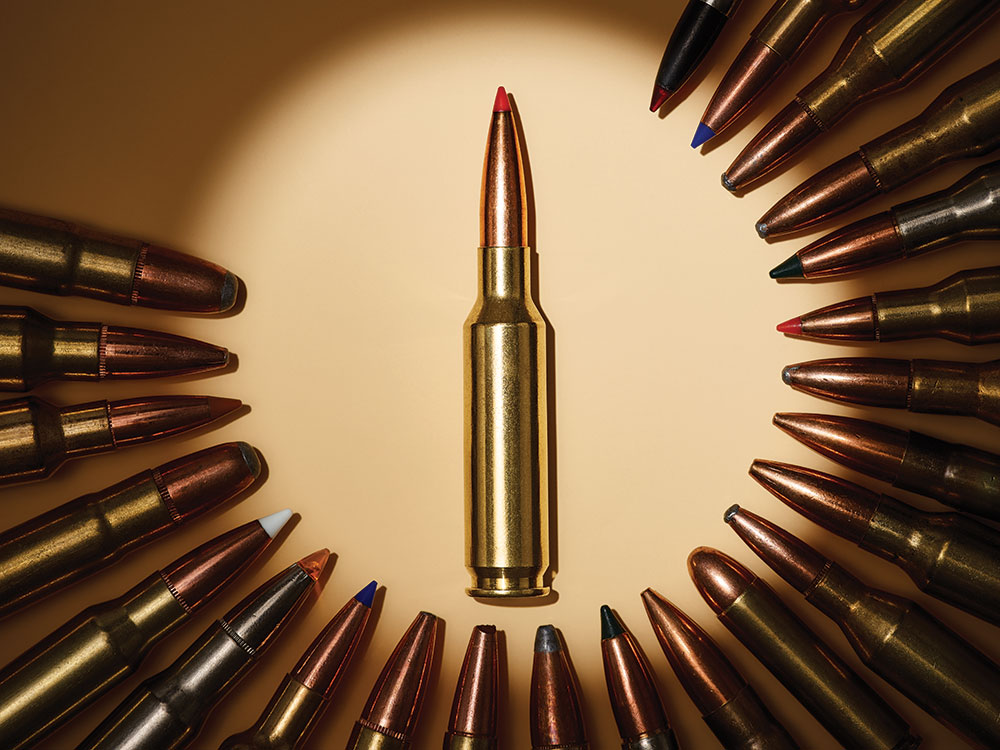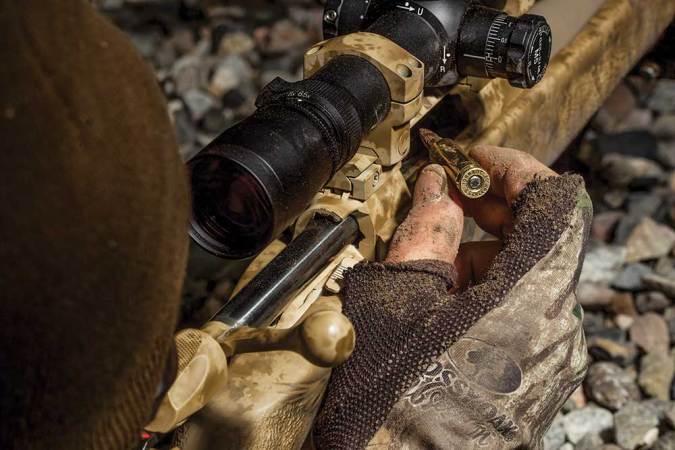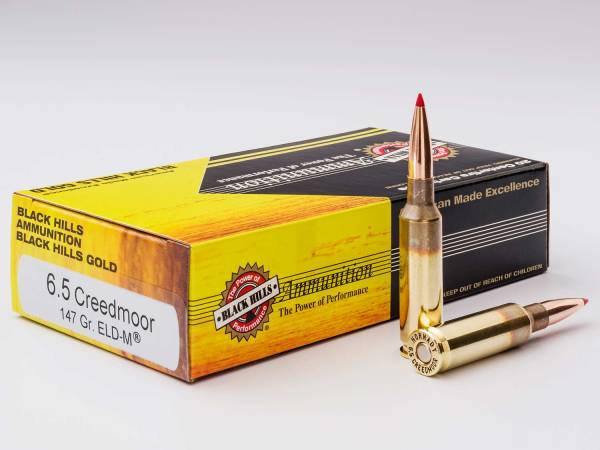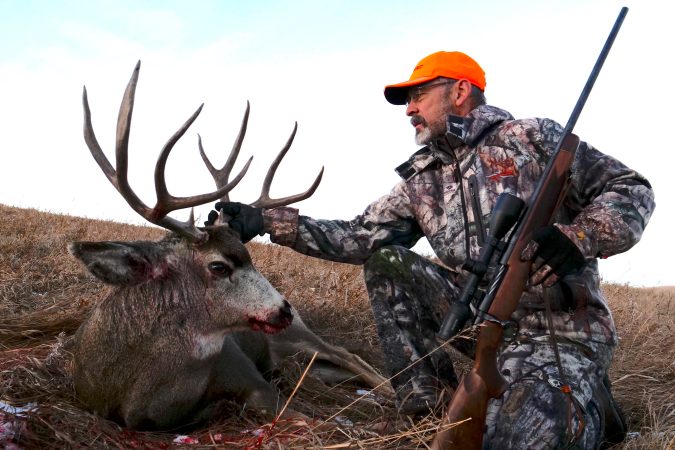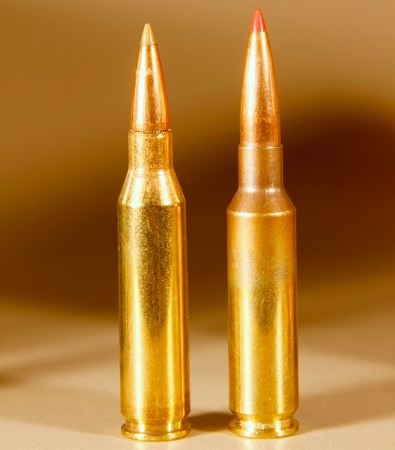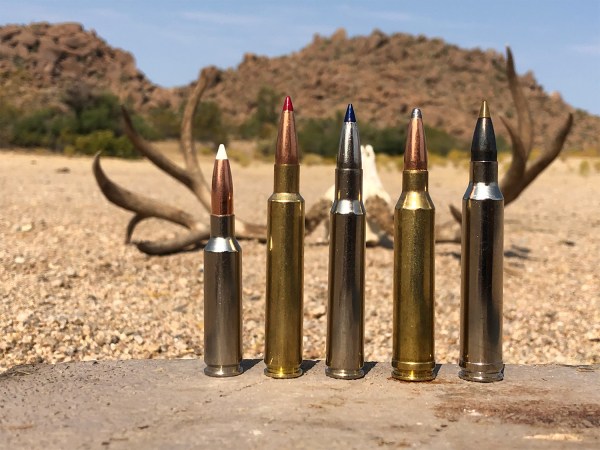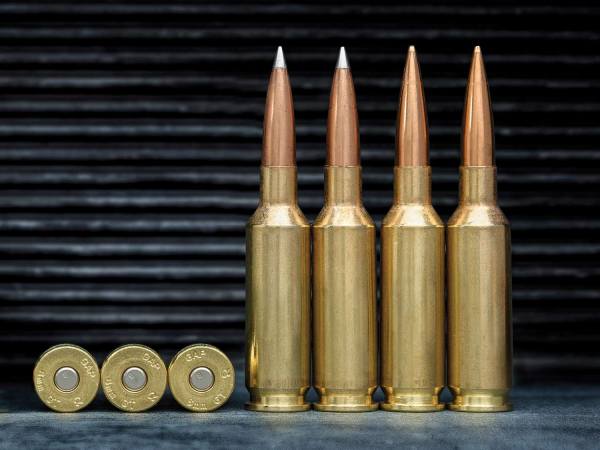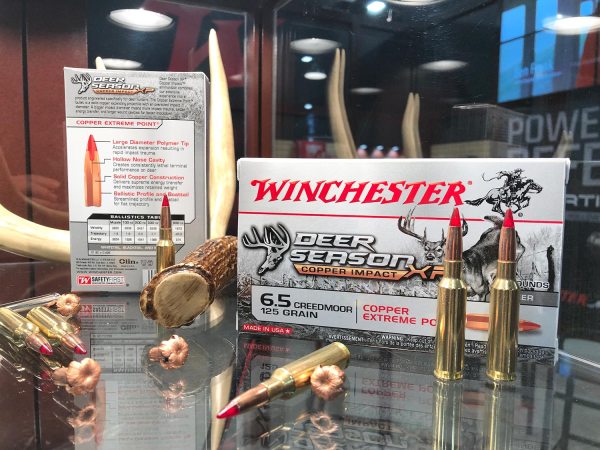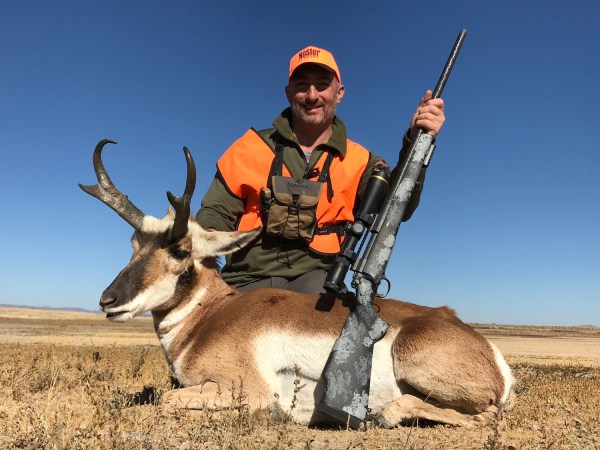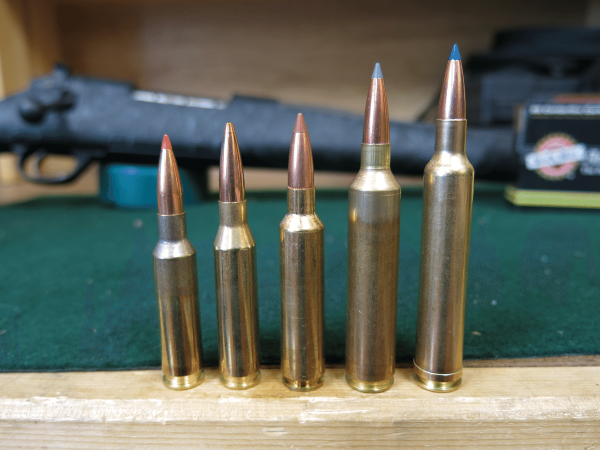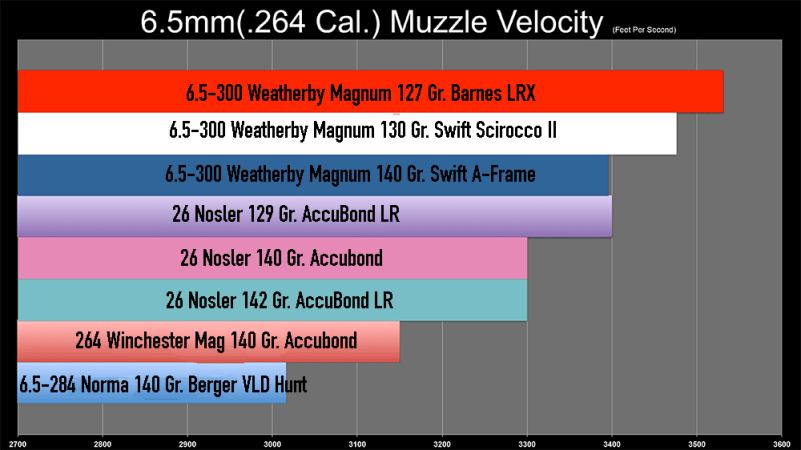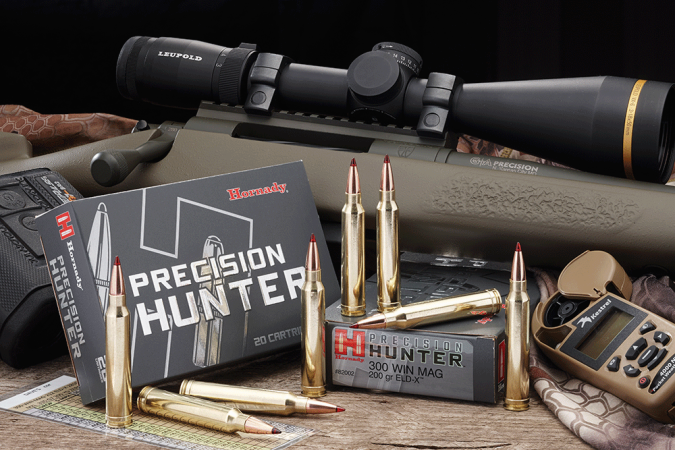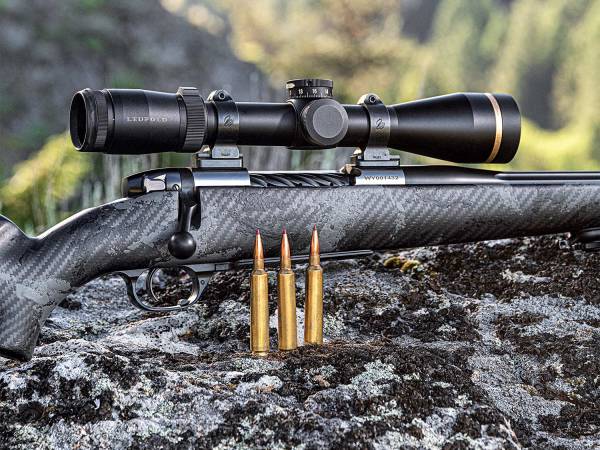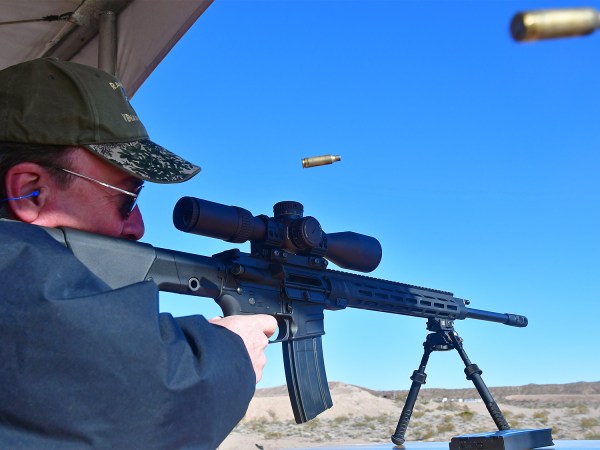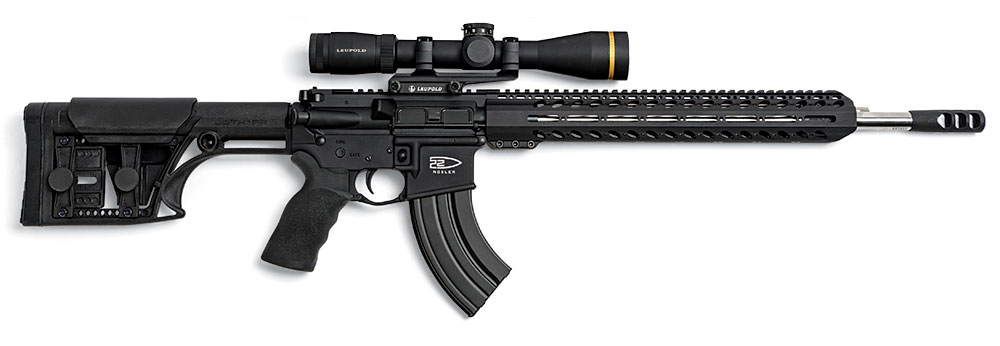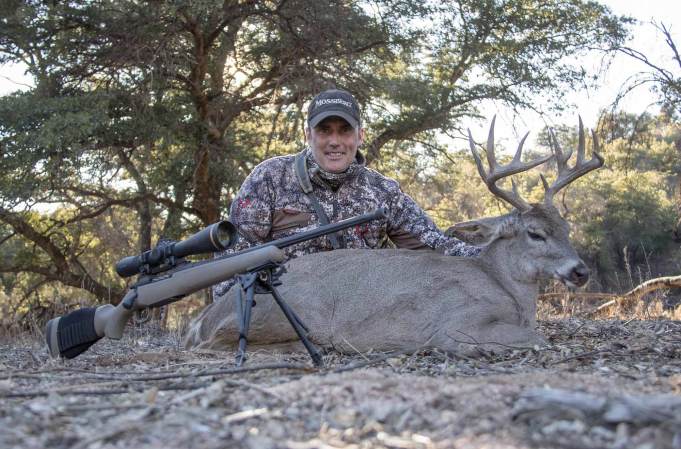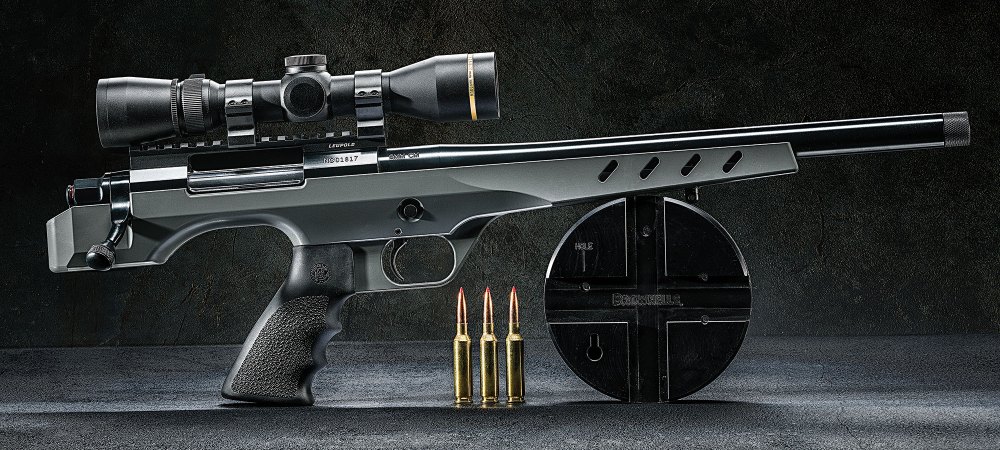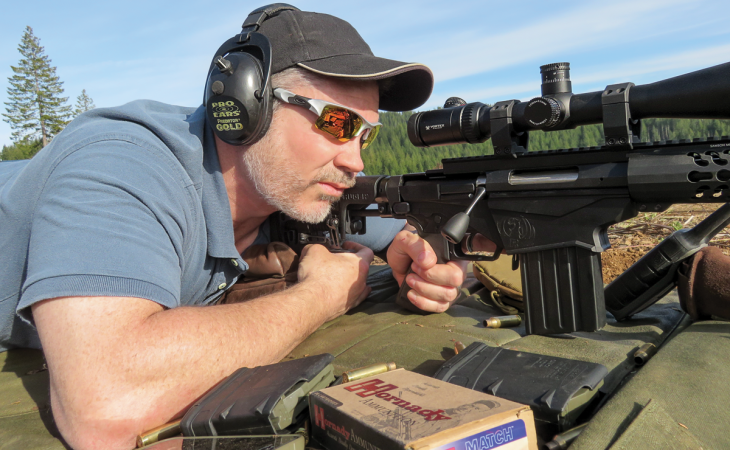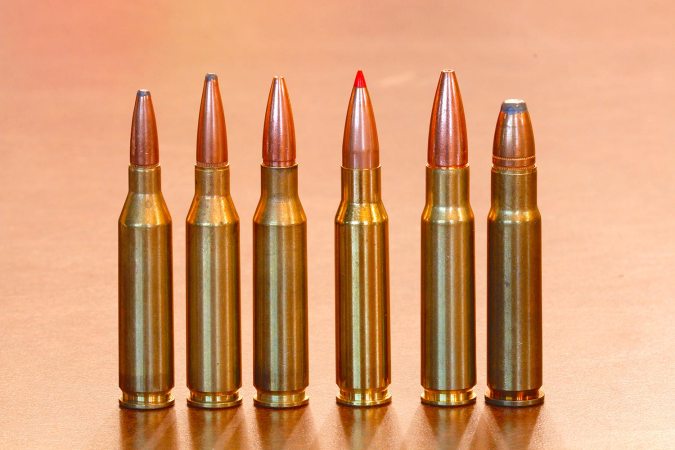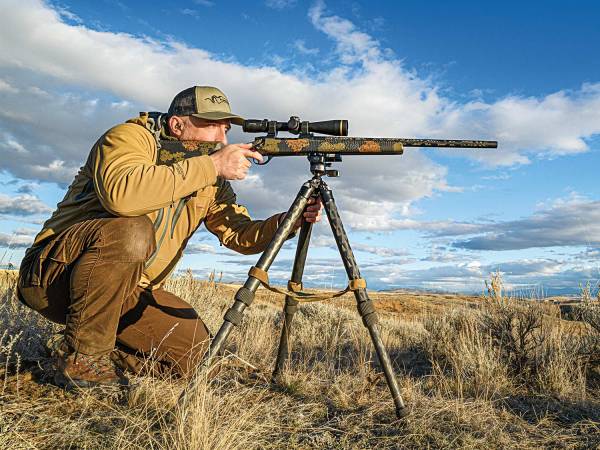We may earn revenue from the products available on this page and participate in affiliate programs. Learn More ›
Six Point Five.
If you want to ensure that a new rifle round has a short life as it attempts to ascend the mountain of success, where it will languish in the foothills and perish, unloved and unmourned by all but a few devotees, then by all means give it a name that starts with “6.5.”
First off, it doesn’t start with a .30. In case you haven’t been paying attention for the last 120 years, here’s a quick rundown of some of our greatest and most successful cartridges: .30/30, .30/06, .308, .300 Win. Mag., .300 Wby., and .300 WSM. See a pattern? Americans love their .30s like no other caliber. So that’s strike one.
Next, it’s metric. Hate to break it to you, but we tried the whole metric thing back when Gerald Ford and Jimmy Carter were pulling on the oars, and it was as popular as fire ants in a tanning bed. Now, there’s one exception to this, and that’s the 7mm Rem. Mag. It must be an unwritten rule that American shooters will tolerate one metric cartridge in the pantheon, and the 7mm Rem. Mag. got the nod. Introduced back in 1962, it has been one of our top 10 hunting cartridges and top 10 centerfire cartridges for many years. The one other popular metric is the 7.62×39. But that Commie round is too crude to be considered part of the pantheon, and only hits the sales it does because of all the cheap military surplus SKS and AK rifles kicking around. And, no, the 5.56 NATO doesn’t count. We only called it that because our European allies couldn’t figure out what a .223 was. It’s the ballistic equivalent of the “Royale With Cheese” from Pulp Fiction. Anyway, the metric designation was strike two.
Lastly, it it has a bullet diameter of 6.5mm, and despite the widespread adulation of 6.5s beyond North America’s shores, these cartridges—whether called 6.5 or .260 or .264—have never done well with American shooters. This is a shame because some damn fine rounds have been crippled by this bias. The 6.5 Remington Magnum never really got out of the starting gate, and the attempts to revive it were complete failures. The .264 Win. Mag. is a hot round with impressive ballistics, but it was overshadowed by the 7mm Rem. Mag. and never gained widespread popularity.
The 6.5×55 Swede, one of the most popular European cartridges for big game, migrated to North America in the late ’50s with the arrival of thousands of surplus Mausers. Even though this round has an amazing pedigree—designed in the late 1800s, it had a distinguished military career lasting decades, has an unimpeachable reputation on large game, and regularly won gold medals at the Olympics, thanks to its accuracy—it, too, suffered from the 6.5 curse and failed to reach the summit of the mountain. Likewise, the .260 Remington, a personal favorite, has struggled, though it gamely fights on. The same goes for the 6.5-284 Norma. Strike three.
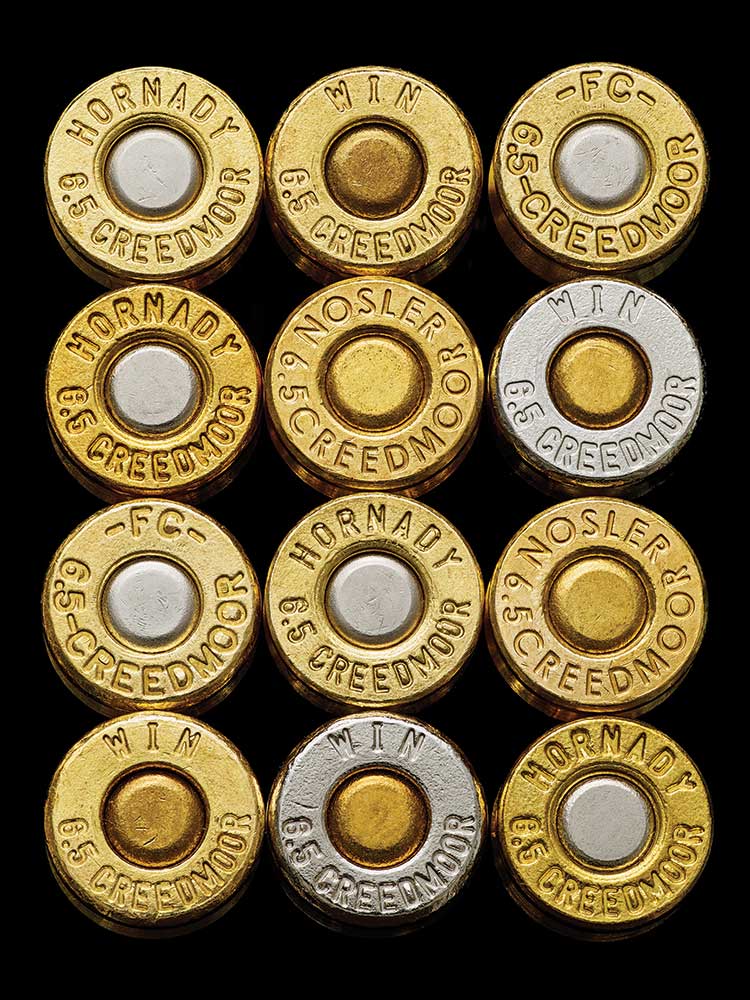
Genesis
Typically, this is how we get new cartridges. A gunmaker approaches an ammo producer—which is sometimes part of the same parent company—and says, hey, we want to introduce a new round, and if you make it, we’ll produce several thousand rifles to support it. They then hype the hell out of it, cross their fingers, and hope shooters are drawn to it like raccoons to hot garbage.
Every now and then a wildcat gains enough traction to join the ranks of standardized cartridges, though this is the exception these days and not the rule. The .243 Win. and .22/250 Rem. are good historic examples of cartridges that traveled this route. More recently, we’ve seen the .338 Federal and the new 6mm Creedmoor follow this path.
The 6.5 Creedmoor was different, however. Neither of these scenarios applied. Instead, it was born out of a gripe session between one frustrated shooter and his friend. The shooter was Dennis DeMille, a legend in the world of High Power Rifle competition. The friend was Dave Emary, senior ballistician at Hornady Manufacturing. The date was August 2005, and the location was the National Matches at Camp Perry, Ohio.
“It was during service rifle week. Dennis and I were sharing a condo. At the end of one day we were sitting and talking, and he told me he was getting frustrated with the 6XC,” Emary says. The 6XC, though it had been winning matches, was still a wildcat, without any published reloading data. Reloaders hadn’t worked out the kinks yet, and their ammo was frequently blowing primers and breaking extractors.
Those shooters turned to DeMille to complain and ask for help—sometimes in between strings of fire while he was competing—since the company he worked for was the exclusive distributor of the rifles chambered in 6XC.
“I went back to the condo that evening and told Dave I was ready to pack up and go home,” DeMille says. Instead, Emary persuaded him to stay, asking DeMille to think about everything he wanted in the ultimate cartridge for across-the-course shooting, as High Power is also known. The next morning, DeMille gave Emary his list. (DeMille went on to win one of his two champion crowns in High Power that year, by the way.)
DeMille came up with seven requirements. The hypothetical cartridge had to:
1. Be magazine length for the rapid-fire strings in competition.
2. Have light recoil, much less than a .308, for rapid fire and general shooter comfort.
3. Shoot flat, with an accurate, high B.C. bullet.
4. Promote good barrel life.
5. Use readily available components, including powder, so that it could be easily replicated.
6. Have the reloading recipe listed on the box.
7. Be produced in quantities sufficient to meet demand.
With those guidelines in hand, Emary went back to Hornady and got to work. He collaborated with Joe Thielen on the project, and at SHOT Show in 2006, he gave DeMille an unmarked piece of brass. The yet-to-be-named round was based on the forgettable .30 T/C, whose only legacy will be the cartridges it has spawned.
“The .30 T/C was still pretty new then, and going to a 6.5 was just logical,” Emary says. “You absolutely cannot beat the aero ballistic performance of 6.5 bullets if they are done right.”
DeMille did some testing with the cartridge and gave feedback on how to improve it. Hornady figured they would call the round the 6.5 DeMille, but DeMille quickly rejected that idea.
“I don’t want to overstate my role in the development of this cartridge,” he says. “It was really Dave and Joe who did all the real work.”
DeMille suggested instead the name Creedmoor, not only based on the company where he was general manager—Creedmoor Sports—but on the history of the location on Long Island, New York, where the first national rifle matches were held.
The following year, in 2007, the 6.5 Creedmoor was launched by Hornady at the SHOT Show, but with no expectation that it would come to dominate the broader hunting and shooting world within just a few years.
The 6.5 Creedmoor’s Versatility is Showcased in these 4 New Rifles

A heavy-barreled bolt gun stocked with an adjustable chassis folder for long-range work.
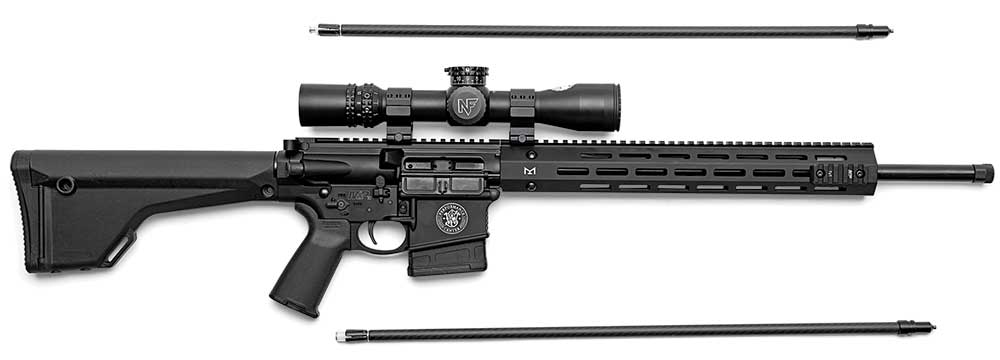
An AR that combines speed with accuracy, and has a threaded 20-in. barrel.

An all-around, all-weather, and well-balanced hunting rifle in stainless steel.
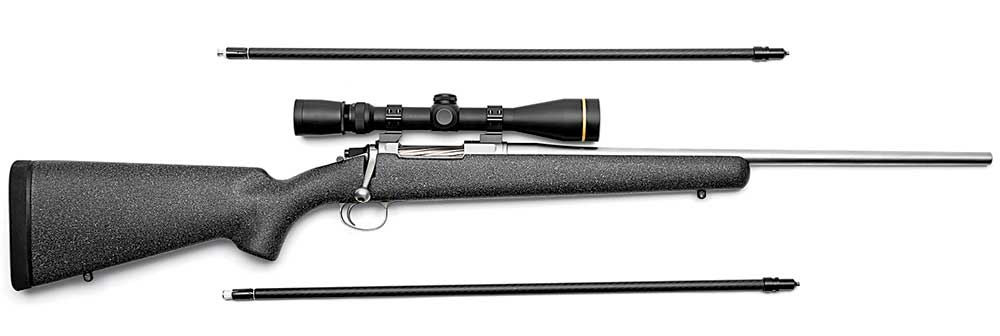
A true mountain rifle, with a carbon-fiber stock and blind magazine, that weighs 5 lb. 3 oz. empty.
Early Years
The 6.5 Creedmoor was initially available in two loads: the 140-gr. A-Max and the 120-gr. A-Max. It drove these bullets at moderate velocities. From a 24-inch barrel, shooters could expect 2,710 fps from the 140s and 2,910 fps from the 120s. Because of the high ballistic coefficient of these bullets, their trajectories left the .308 in the dust.
“It is basically a do-anything cartridge,” Emary says. “With the 140-grain bullets, it has the same trajectory as a .300 Win. Mag., but with 40 percent of the recoil.”
That do-anything quality wasn’t common knowledge at the time, however, though a handful of early adopters were set to change that. I was among those who took a shine to the 6.5 Creedmoor from day one. In fact, as soon as it was announced, I sent a Remington 700 action to Darrell Holland, a custom gunmaker who specializes in long-range accuracy, to have him build me a Creedmoor before I could even get my hands on the ammo.
Once I did have those cartridges in hand—with the reloading information printed on the side of the box—I discovered that the ammo delivered exceptional accuracy, both on steel at long range and on game. That accuracy wasn’t a fluke. Sharp-eyed observers noticed the brass, for instance, wasn’t as shiny as Hornady ammo typically is. The annealing marks on the cartridge necks were visible. At DeMille’s urging, Hornady opted to skip a tumbling process that cleans the brass until it gleams like a new penny because that scouring could ding the necks, degrading performance.
This attention to detail throughout the design and manufacturing process paid off. Off the shelf, the ammo turned in ½ MOA to ¾ MOA groups in well-built rifles. And because shooters had the reloading data at their fingertips, it was easy—and economical—to replicate this performance.
The cartridge started to win matches and take down game. But the majority of hunters either hadn’t heard of the cartridge or were skeptical that such a small round would be of much use for anything larger than a deer. Decades of worship at the Temple of the Magnum had skewed our notions of what constituted a good big-game round.
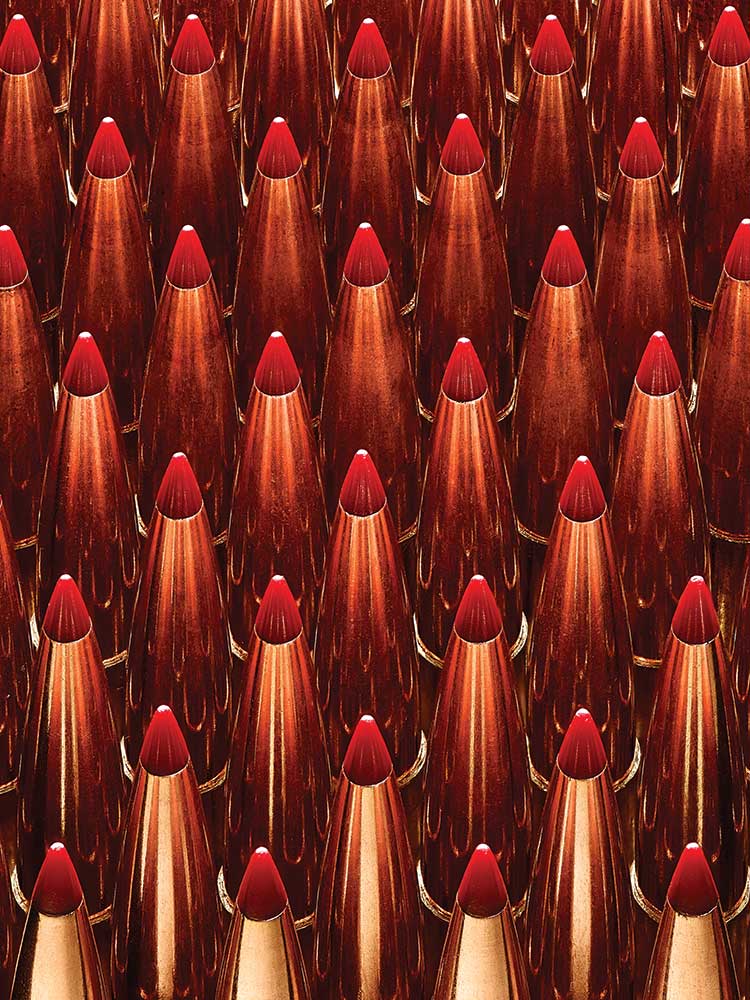
Going Big
In 2011, I took a 6.5 Creedmoor to Africa, to use the cartridge on larger game and to test Hornady’s new GMX bullet. The GMX is one of the newest high-tech hunting projectiles that has helped change perceptions on what qualifies as “enough gun” on game.
It is a monolithic bullet, like the Barnes Triple Shock, that retains its weight while penetrating deeply and expanding reliably, even after punching through hide and bone. Other modern bullets that exhibit similar terminal ballistics include the Nosler AccuBond, Federal’s Trophy Bonded Tip, and Barnes’ tipped and untipped bullets.
In 6.5mm, the GMX weighs just 120 grains, but it hits hard, punching outside its weight class. As you’d expect, I was able to make pinpoint shots on smaller animals, thanks to the accuracy of the round and its mild recoil, but it was on the bigger critters that the cartridge really demonstrated the do-anything quality that Emary spoke of.
I took a pair of waterbuck bulls—barrel-chested animals as thick as an elk—both going down with quartering shots that penetrated through more than 3 feet of meat and bone. However, the real demonstration of the 6.5’s potential came when I shot a giant eland, the world’s largest member of the antelope family, which can tip the scales at more than 2,000 pounds, even larger than the American bison.
At 220 yards, my bullet went through the old bull’s front leg, busted through a 2×4-sized rib, took out both lungs and the heart, and broke the rib on the off-side of the animal before coming to a stop in his far front leg.
Since the round was introduced, I’ve turned to it time and again, and have taken more animals with it since 2007 than with any other cartridge. When my teenage daughter drew a mountain goat tag near our home in Montana, she was behind a 6.5 Creedmoor as her trophy appeared at 300 yards, and she anchored it with one shot. My son shot a beautiful antelope buck in Colorado with one as well, putting his 140-gr. Nosler Ballistic Tip right behind the front leg of the animal, which was a touch over 400 yards away.
I’ve also seen what the 6.5 Creedmoor can do in competition at 1,000 yards and beyond. I’ve used it to place well in various long-range tactical matches, shooting it from both gas guns and bolt-actions. It remains one of the top-performing cartridges in the Precision Rifle Series, and any shooter with an accurate rifle can be competitive with affordable factory ammo.
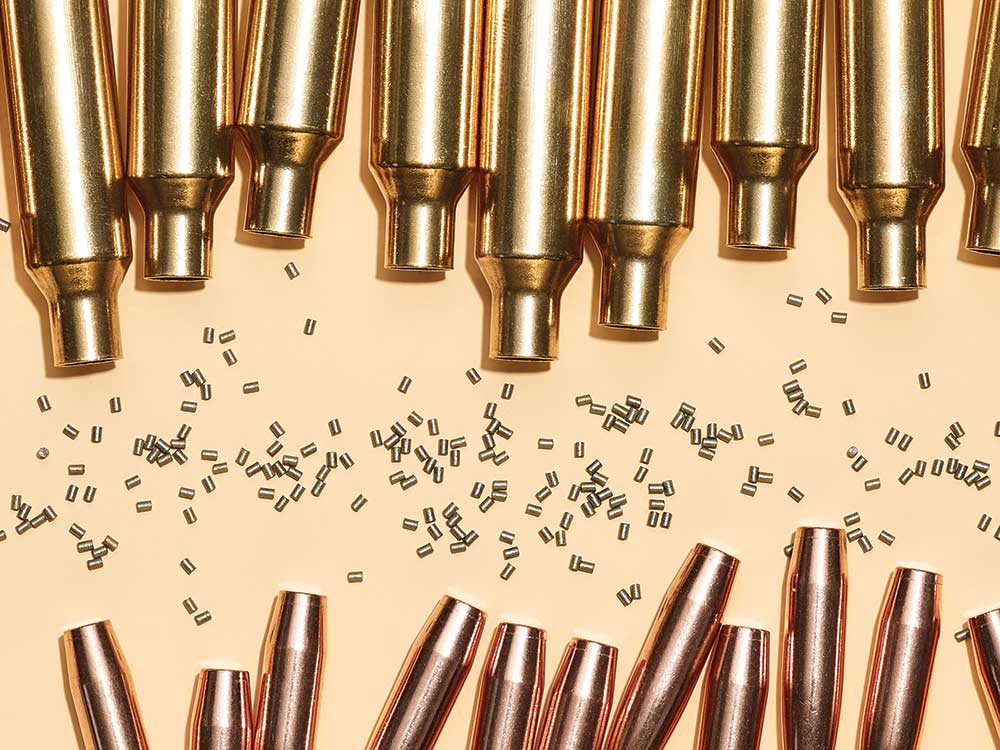
Giant Slayer
It is this combination of lethal hunting efficacy and long-range accuracy that has drawn so many into the 6.5 Creedmoor fold. It has taken several years for word to get out, but 2017 represents a new threshold for this mighty little cartridge.
The number of production rifles chambered in 6.5 Creedmoor has grown at a steady pace since the beginning. But this year nearly every company that has introduced a new long gun is doing so in 6.5 Creedmoor—even at the expense of gold standard calibers like the .30/06, .243, and .308.
And what’s particularly remarkable is that these new rifles span everything from purpose-built tactical guns weighing more that 12 pounds to lithe, handy mountain rifles that tip the scales at less than half that. As much as anything, this demonstrates the Creedmoor’s impressive versatility.
At Hornady, the 6.5 Creedmoor is second only to the .223 in terms of sales.
Other ammo makers have embraced the round as well. Federal, Nosler, and Winchester all have accurate 6.5 Creedmoor loads in their lineups, giving shooters plenty of options when it comes to fueling their guns.
So, far from striking out, the 6.5 Creedmoor has defied the odds, overcoming significant historical obstacles, to become one of our dominant rifle cartridges. I’m confident it will remain so for years to come. Its track record in the field and in competition is too compelling.
For a hunter looking to put venison in the freezer, or a marksman looking to hone his or her skills at the range, it has no equal. It is the ultimate shooter’s cartridge. Plus, how can you not cheer on the little guy, who was such an underdog, as he attains the summit of that mountain?
Ballistic Coefficient (BC) Explained
From the first time somebody put a rock in front of black powder in a tube, the shooter wanted to know where he needed to aim to hit the target. It is common knowledge that to determine a trajectory we need to know the muzzle velocity, the distance to the target, and where the firearm is zeroed. We also need to factor in atmospheric conditions, but that’s another topic.
Now comes the difficult part: We need to figure out how long it takes our projectile to get to the target. Calculating Time of Flight (TOF) lets us know how long gravity has to work on the projectile. Once we have this information we can ascertain the bullet’s fall and drift.
To come up with TOF we have to determine the rate at which the projectile is slowing down. In other words, we have to calculate the drag on the projectile. However, this gets even more complicated because the drag on the projectile is not constant, but changes with velocity.
Imagine the challenges facing a ballistician back in the late 1800s: There are no computers, no radar and, at best, this person has access to a very crude chronograph. The only way to define the drag on a projectile is to use the chronograph to measure the projectile’s retained velocity at various intervals down range. The velocity data would then be used to calculate the drag between each interval. It was an extremely tedious, expensive, and time-consuming effort to get the velocity and drag profile for just one projectile, let alone hundreds of different types.
But the ballisticians of this era figured out that by using a simple ratio, Ballistic Coefficient (BC), they could determine a reasonably good approximation of the drag of any projectile by comparing it to a standard projectile drag, as determined above. This would allow reasonably accurate retained velocity and TOF calculations. The initial standard projectile, the G1 projectile, was of a German artillery projectile. They carefully measured the drag of this projectile and also measured the TOF and retained velocity versus distance. However, the G1 standard is a poor representation of a modern low-drag projectile and in the 1940s the G7 standard came along, representing a modern, boat-tail US artillery shell. Images of both the G1 and G7 standard projectiles can be found on the internet.
The most common method to determine BC is to compare the retained velocity—over a known distance—of a projectile to the standard G1 or G7 projectile. The tables of velocity, distance and TOF are called the Siacci tables and can be found at jbmballistics.com. A chronograph makes it easy to determine retained velocity at specific distances downrange and compare those velocities to the standard projectiles.
One simple way to think about BC is as a representation of how well a projectile, like a hunting or target bullet, hangs on to its velocity as it travels downrange. The higher the BC value of a bullet, the better it resists the drag exerted by the atmosphere. ––Dave Emary

